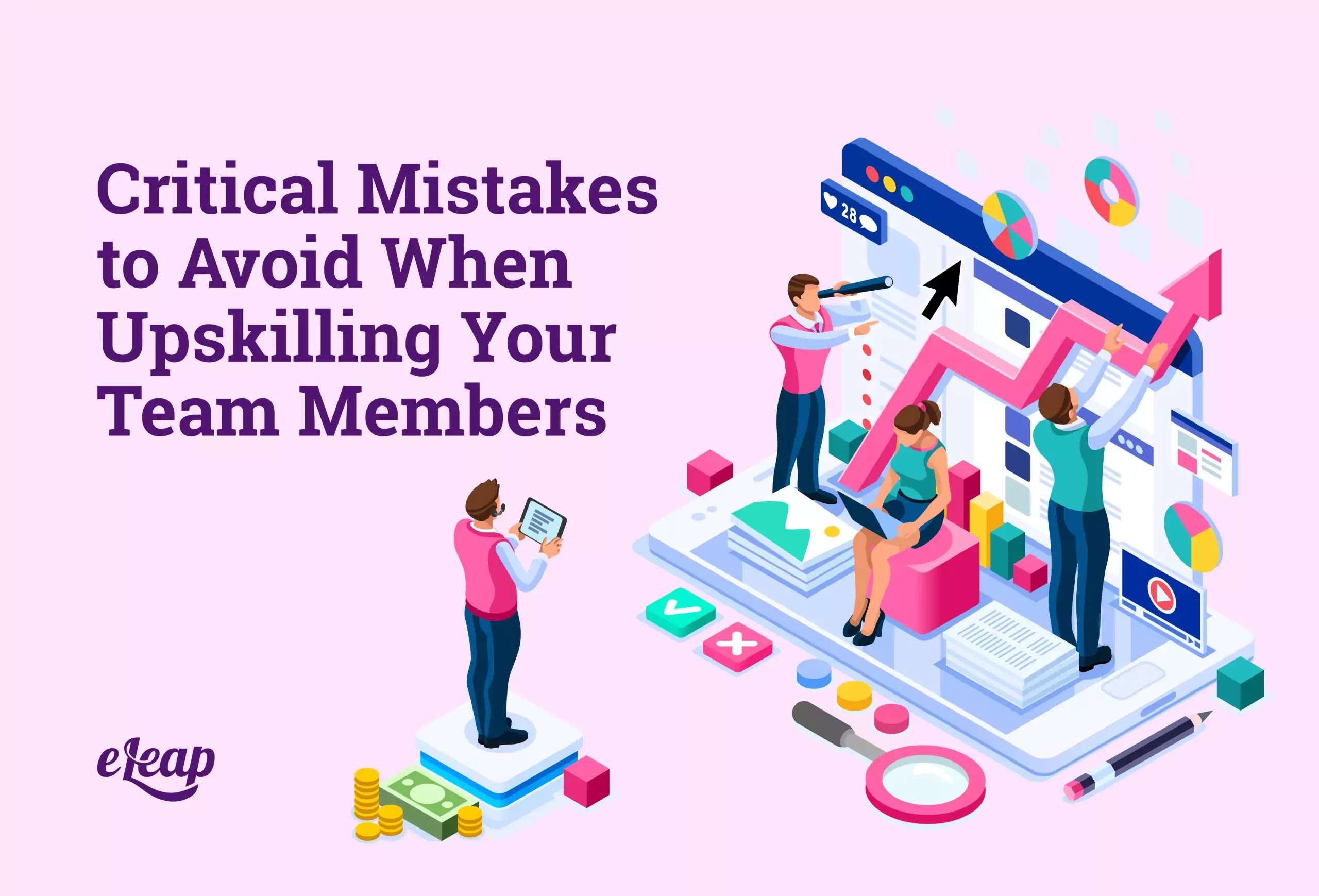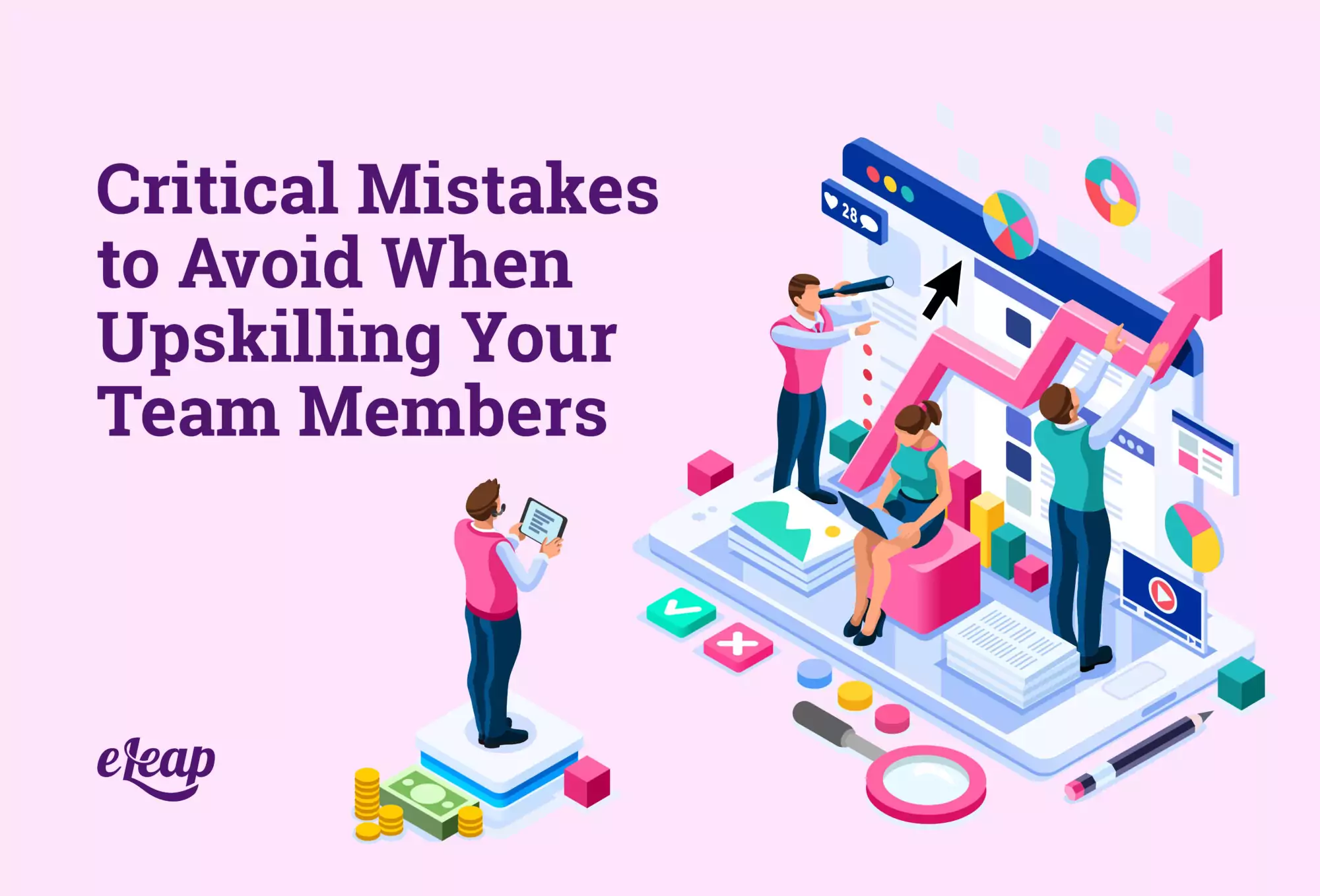Critical Mistakes to Avoid When Upskilling Your Team Members

Struggling to close the skills gap within your organization? It’s pretty common today. One proven way to do that, short of a major hiring initiative, is to upskill your current team members. Online upskilling with a learning management system (LMS) is an excellent option that offers flexibility, learning on the go, and the chance to create individual career paths with custom upskilling based on employee strengths and weaknesses.
However, there is room for missteps in this process. Some mistakes can be so detrimental that they derail your entire upskilling initiative. To help you avoid that fate, we’ve created a list of the most critical mistakes to avoid when upskilling your team members with an LMS.

Assuming That Everyone Needs the Same Thing
We touched on this in the introduction, but let’s double down on it briefly. Each team member has specific strengths and weaknesses, as well as interests, talents, and goals for their career. Upskilling should not be a one-size-fits-all affair. It should be customized to each team member and should also connect with your overall strategy. ~@
Speaking of that strategy, it should be developed based on an accurate understanding of your skill and performance gaps, which brings us to the next mistake.
Not Knowing Where You Stand
All of your upskilling efforts should be based on a deep understanding of your existing skill and performance gaps. You need to know where those are and what problems they cause. You should also have at least a rough idea of how things will change over time. For instance, is there a major project on the distant horizon that will require a major investment in new software? Do you have the talent in place for that? What will it take to ensure your people are ready when the project becomes a reality?
So, how do you find out what skills and performance gaps exist? It’s better to start with finding out what your team members know and then determine where that falls short. Surveys and assessments can give you the answer you need here. Then you can begin building a more accurate picture from that point.
Not Knowing Roles and Requirements
You need to upskill your employees to close performance and skills gaps. However, what are those gaps tied to? What positions and responsibilities require the skills that you’re lacking?
Failing to know what roles and requirements will pertain to your team members is a short road to disaster. It is important to define what responsibilities go with what roles and what skills will be necessary to accomplish those. A task needs analysis will help you evaluate the insights available through your LMS and other reports to determine the specifics, allowing you to create detailed, accurate descriptions.
Not Providing Support
Training is a one-time event. Learning is an ongoing process. The goal with upskilling is to train your employees so that they learn new skills and develop their abilities. Because the ultimate outcome is learning, you’ll need to ensure that you can provide ongoing support throughout the process. What form should that support take, though?
It can come in a very wide range of shapes and forms. For some organizations, a mentorship program might be the right fit. For others, a peer coaching program might offer better outcomes. Social learning programs through your LMS, an eLearning library, and even live events can all play a critical role here.
Not Accepting Feedback
While a lot of the conversation will be one-way when it comes to upskilling your team members, you must make time to listen to their feedback, as well. This is critical to your success. What sort of feedback should you seek out?
What skills does each employee want to develop? What are their career goals? How do they feel that you can support them in that advancement while also speaking to your skills gaps? The answers to these questions will help you create an accurate upskilling strategy while also improving employee loyalty and engagement.
Focusing Too Much on Autonomy
There’s been a lot of talk about autonomy in the workplace in recent years. Make no mistake – it’s a good thing! Autonomous team members are better able to make their own decisions, take ownership of projects, and are much more engaged. However, focusing too much on autonomy during the upskilling process can have detrimental effects.
To be clear, yes, team members will need to work on upskilling by themselves at certain points. However, remember that learning doesn’t occur in a vacuum. You owe it to them to provide social reinforcement. Simply put, they need to practice and hone their skills with others. That can be through online social activities or through in-person interaction.
Working with others allows your team members to gain a deeper understanding of what they are learning. It also allows them to share with others and build stronger bonds, which can translate to better teamwork, more engagement, and other critical benefits.
Not Allowing Self-Evaluations
You’ll need to assess and evaluate your team members’ progress. And for at least some of that, you’ll need to use LMS-based assessments to do so on your end. However, never underestimate the power and value of self-assessments. These can provide you with excellent starting points but also ensure that employees can see firsthand where their training is paying off.
Our advice is to start with a self-assessment to help each team member identify their strong suits and their weak areas. Then, provide them with self-assessments at strategic points in the online upskilling journey. These should be positioned to provide not just a snapshot of existing skills but encouragement and support.
The Importance of Your LMS
Upskilling your team members is a proven way to close the skills and performance gaps within your organization. However, you must have the right learning management system. A modern LMS offers flexibility, customization, in-depth reporting, and more, all of which are necessary. At eLeaP, we’ve designed a cutting-edge learning management system that provides the capabilities and features needed to close your skills and performance gaps, create a stronger organization, and accelerate your success.